|
Arab Studies Journal Vol. XXIX, No. 1 Spring 2021 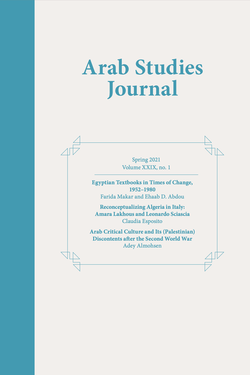 In this issue, we are proud to feature articles that explore the production and circulation of knowledge from diverse disciplines and approaches. In “Egyptian Textbooks in Times of Change, 1952–1980,” Farida Makar and Ehaab D. Abdou trace the production and transformation of historical met- anarratives within Egypt’s post-1952 educational bureaucracy. By exploring the bureaucracy as a site of knowledge production, they provide a nuanced portrait of the processes by which changing political contexts inform text- book content. In “Reconceptualizing Algeria in Italy: Amara Lakhous and Leonardo Sciascia,” Claudia Esposito argues that reading these two authors through a transcolonial lens can provide tools to decolonize studies of the Mediterranean. Developing Aldo Moro’s concept of converging parallels, Esposito reveals how Lakhous’s use of the giallo crime novel genre permits new kinds of readings of Algeria and the Maghrib, and new understandings of power, corruption, and memory that transcend the national frame. Esposito’s article is the first in a series of articles expounding new approaches to Maghrib studies, assembled by guest editor Brahim El Guabli, which will continue in Arab Studies Journal’s Fall 2021 issue. Finally, in “Arab Critical Culture and Its (Palestinian) Discontents after the Second World War,” Adey Almohsen historicizes the consolidation of a particular understanding of iltizam. By exploring specific Palestinian literary and cultural critics, Almohsen brings to the fore those writers that did not subscribe to that understanding or who otherwise wrote from a different set of concerns they viewed as central to the Palestinian reality. In doing so, Almohsen forces us to rethink the chronologies and categories that have emerged in the historiography to narrate Arab literary and critical output since the Nakba. We are equally proud, as always, to feature a robust and incisive collection of reviews examining the latest contributions to the interdisciplinary study of the Middle East and North Africa. This Spring 2021 issue marks the third during the Covid-19 pandemic and the second of our co-editorship of Arab Studies Journal. We would like to acknowledge the volunteer labor of the entire editorial team and our network of anonymous reviewers. We are well aware of the burdens, stresses, and dislocations—not to mention physical and emotional toll—the pandemic has inflicted upon our articles, reviews, and administrative sections, both collectively and individually. That our team, external reviewers, and authors have maintained their commitments to Arab Studies Journal and its publication cycle during this difficult time is something we hold dear and do not take for granted. Our success as a journal reflects this joint commitment, even if the responsibility for any shortcomings are our own as co-editors.
0 Comments
General Call for Submissions: Arab Studies JournalArab Studies Journal (ASJ) is a peer-reviewed, multidisciplinary journal of Middle Eastern and North African studies.
ASJ welcomes article manuscript submissions on a rolling basis. We seek submissions that focus on the regions, communities, and peoples comprising the Middle East and North Africa, from the seventh century to the present. Articles on communities or politics in other regions of the world that had or have strong Middle Eastern ties or contexts, or on relations between those regions and the Middle East and North Africa, are also strongly encouraged. Submissions may fall within the disciplines of anthropology, art and architecture, economics, history, law, literature, political science, religion, and sociology, or interdisciplinary approaches as with political economy, women, gender, and sexuality studies, and race and racialization. Submitted articles should be 25–40 double-spaced pages in 12-point font (Times New Roman), or between 6,500 and 10,000 words including endnotes. All material submitted to ASJ must follow the submission guidelines, available at the following URL: https://www.arabstudiesjournal.org/article-submissions.html. We welcome inquiries and submissions at coeditors@arabstudiesjournal.org To view past issues of ASJ, visit https://www.arabstudiesjournal.org/issues.html Arab Studies Journal |
This section will not be visible in live published website. Below are your current settings: Current Number Of Columns are = 1 Expand Posts Area = 1 Gap/Space Between Posts = 10px Blog Post Style = simple Use of custom card colors instead of default colors = Blog Post Card Background Color = current color Blog Post Card Shadow Color = current color Blog Post Card Border Color = current color Publish the website and visit your blog page to see the results AuthorWrite something about yourself. No need to be fancy, just an overview. Archives
June 2021
Categories |
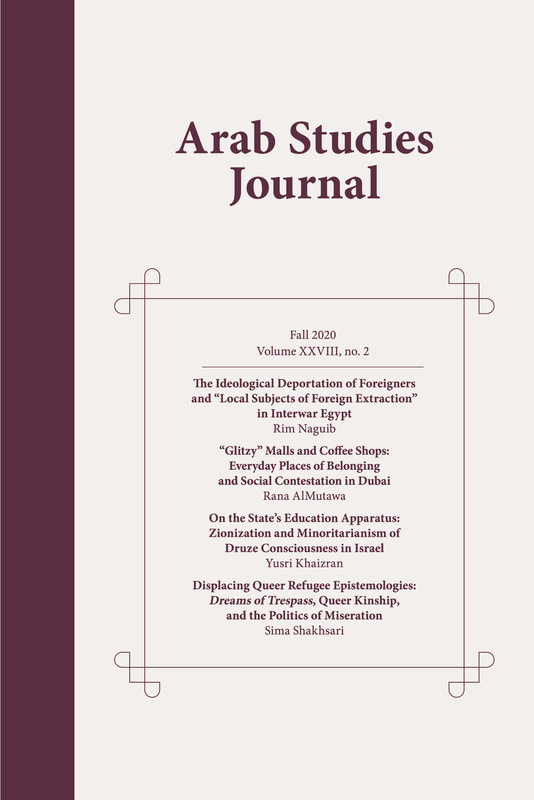
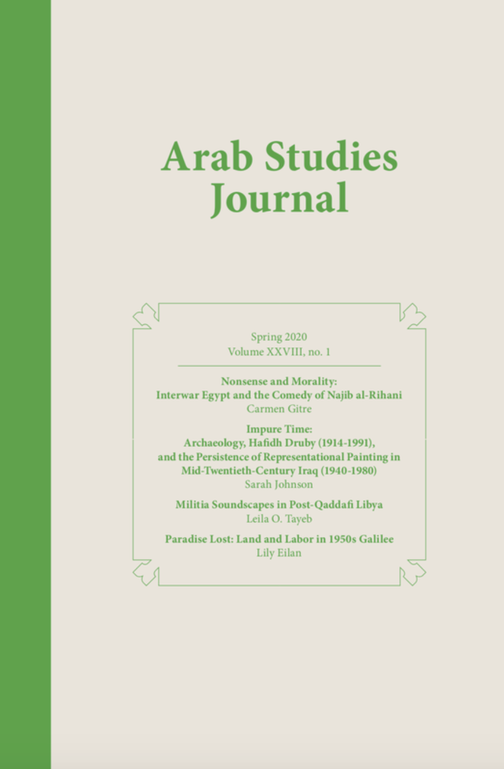
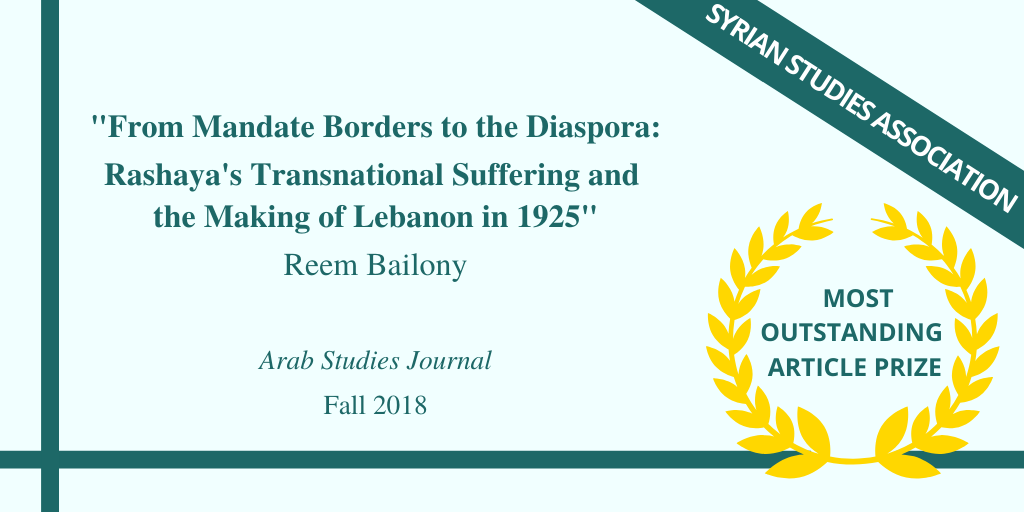
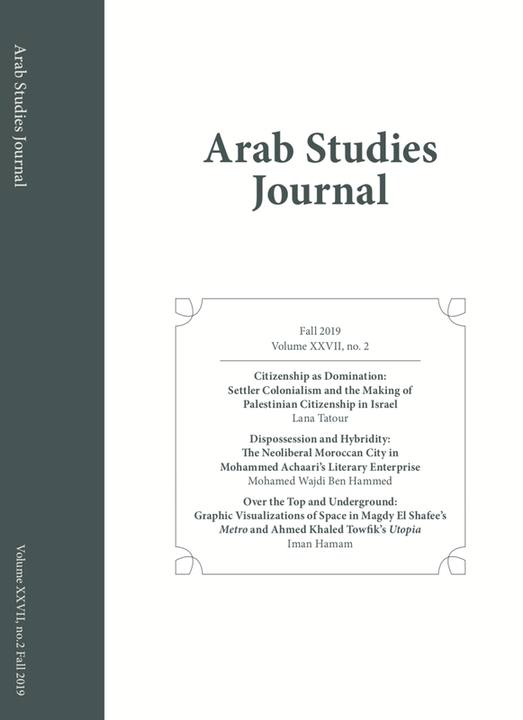
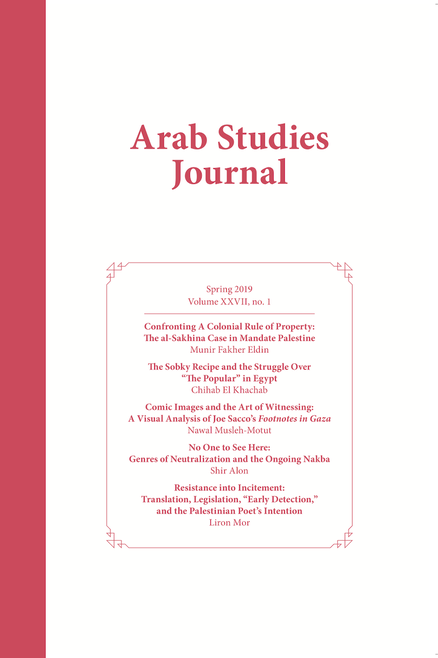
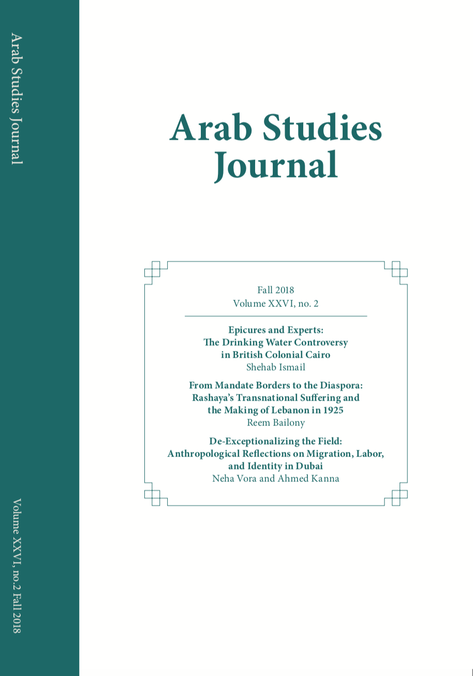
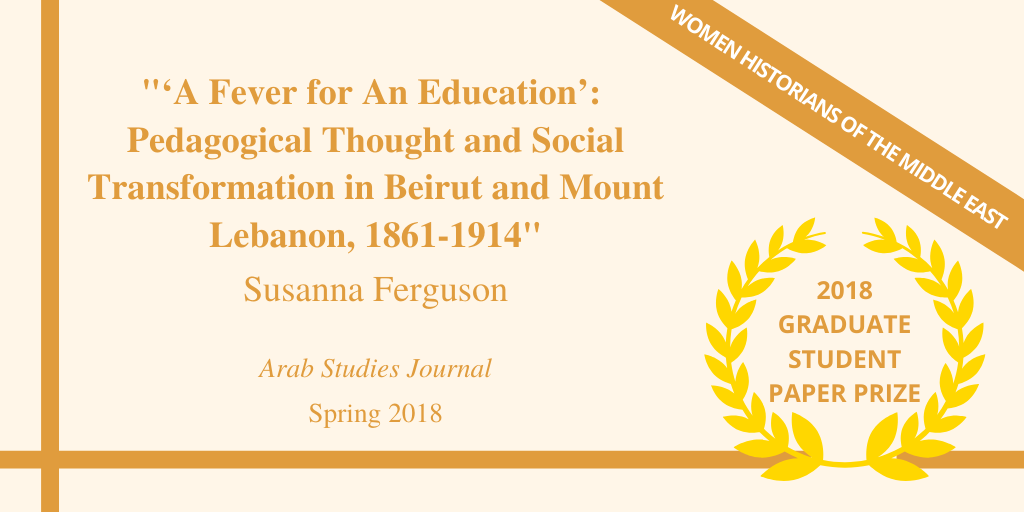
 RSS Feed
RSS Feed